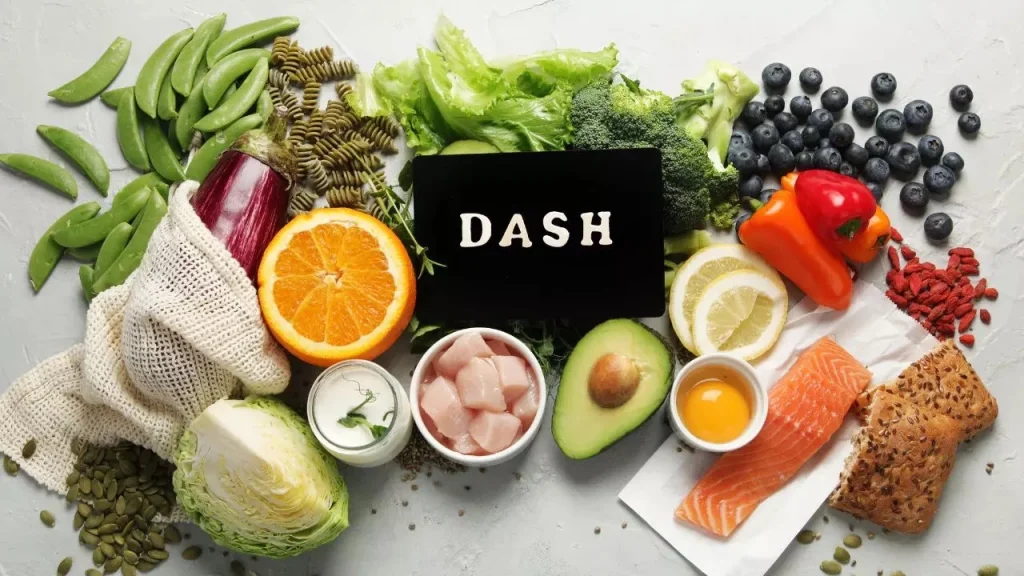Lowering Blood Pressure With the DASH Diet

High blood pressure can pose serious health risks and is one of the primary contributors to heart disease, but lifestyle modifications, like adopting the DASH diet, can provide solutions.
This healthy eating plan emphasizes vegetables, fruit, whole grains, low-fat or fat-free dairy and lean proteins as part of its focus. Furthermore, sodium (also called salt), added sugars and saturated fats found in fatty meats or full-fat dairy are limited.
Eat More Fruits and Vegetables
Research indicates that individuals can reduce their sodium consumption by choosing to incorporate healthier foods into their meals, such as red peppers in stir fry and using whole grain brown rice instead of white, which will both lower sodium intake levels.
Add beans, nuts and seeds – which provide protein, magnesium, potassium, fiber and phytochemicals – to your diet to lower blood pressure. Either purchase dried beans to cook yourself or select low-sodium canned versions.
Reducing sugar intake should also be part of your plan, with no more than five servings of desserts, sweetened beverages and snacks per week from sweeteners like desserts, soda pop and sweetened snacks being eaten as treats or consumed between meals. You should also aim to limit processed foods such as processed cheese, saturated and trans fats from meat products and fried foods – your doctor can assist in setting goals tailored specifically to you and your individual requirements.
Eat Less Meat
The DASH diet permits small portions of red meat, poultry, and fish in order to lower saturated fat intake and thus the risk of heart disease. People following the DASH diet should try their best to select leaner cuts of meat while avoiding processed products as part of this lifestyle change.
Diets promoting blood pressure regulation typically encourage people to consume more beans, nuts and seeds because these foods contain potassium, magnesium and calcium, all essential in controlling blood pressure.
Adjusting to a DASH diet may seem like a difficult transition, but starting slowly and making gradual changes is the key to making lasting progress. For instance, if you tend to add salt when eating your meals, gradually cut back until no salt is being added at all – this could take about one or two weeks. Furthermore, cooking more and dining out less will also help lower sodium consumption.
Cut Back on Sodium
Studies demonstrate that decreasing sodium consumption helps lower blood pressure. This is one of the main goals of the DASH Diet.
Canned or frozen vegetables and fruit may provide more sodium-conscious individuals with healthier choices, as these options typically contain less salt than fresh produce. Low-sodium chocolate should still be enjoyed occasionally so long as total sodium intake doesn’t surpass its daily limit.
Reduce sodium gradually; abrupt reduction can cause GI distress. If you need assistance, speak with your healthcare provider for tips and guidance. To further lower blood pressure, try following the DASH diet while adding physical activity into your routine; studies have proven that combined efforts of low sodium diet and physical activity work more effectively than either alone.
Get More Potassium
The DASH diet provides plenty of potassium to reduce blood pressure. Furthermore, magnesium aids muscle and nerve health as well as calcium for bone protection and protein for heart health.
DASH recommends restricting fats and oils to two to three servings daily, such as margarine made from vegetable oils such as canola, olive or safflower as well as low-fat mayonnaise. Furthermore, DASH advocates for using vegetables instead of meat when creating meals.
A recent study suggests that when combined with regular exercise, the DASH diet can significantly lower both systolic and diastolic blood pressure levels while potentially helping overweight and obese individuals reduce weight. To see if it’s right for you, speak to your physician or registered dietitian about trying it.
Exercise
The DASH diet does a tremendous job of lowering blood pressure on its own, but for maximum effectiveness you can combine it with more physical activity. Pritikin Longevity Center offers lifestyle change programs that help add movement and exercise into daily routines.
The DASH diet emphasizes whole foods such as fruits, vegetables, lean meats and fish, low-fat dairy, nuts and seeds with healthy fats from vegetable oils as well as eggs which are high in protein. You should aim to cut out added sugars such as table sugar, candy and soda during your first two weeks; some natural sweeteners such as honey may still be allowed – the overall goal being reduced sugar intake.







